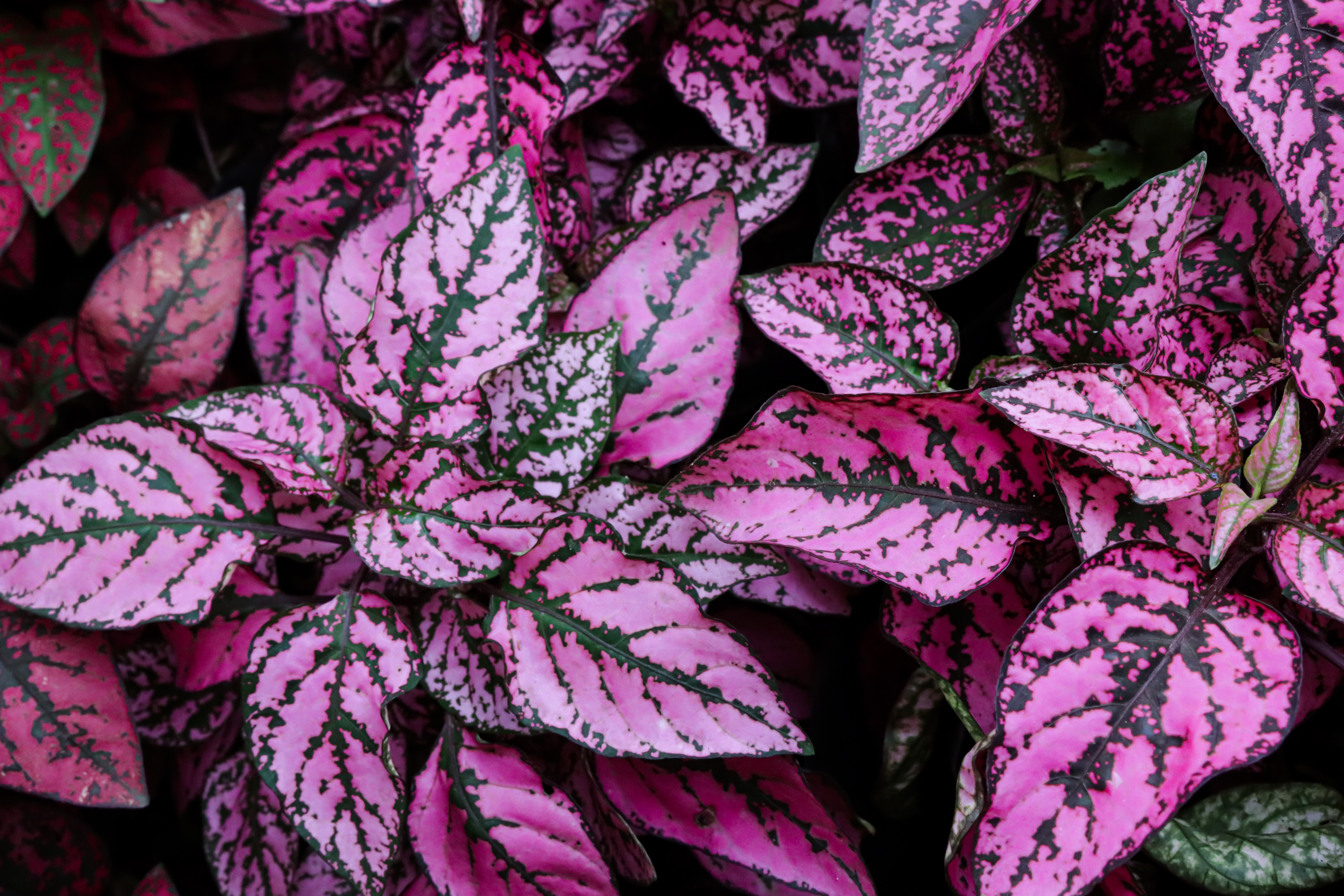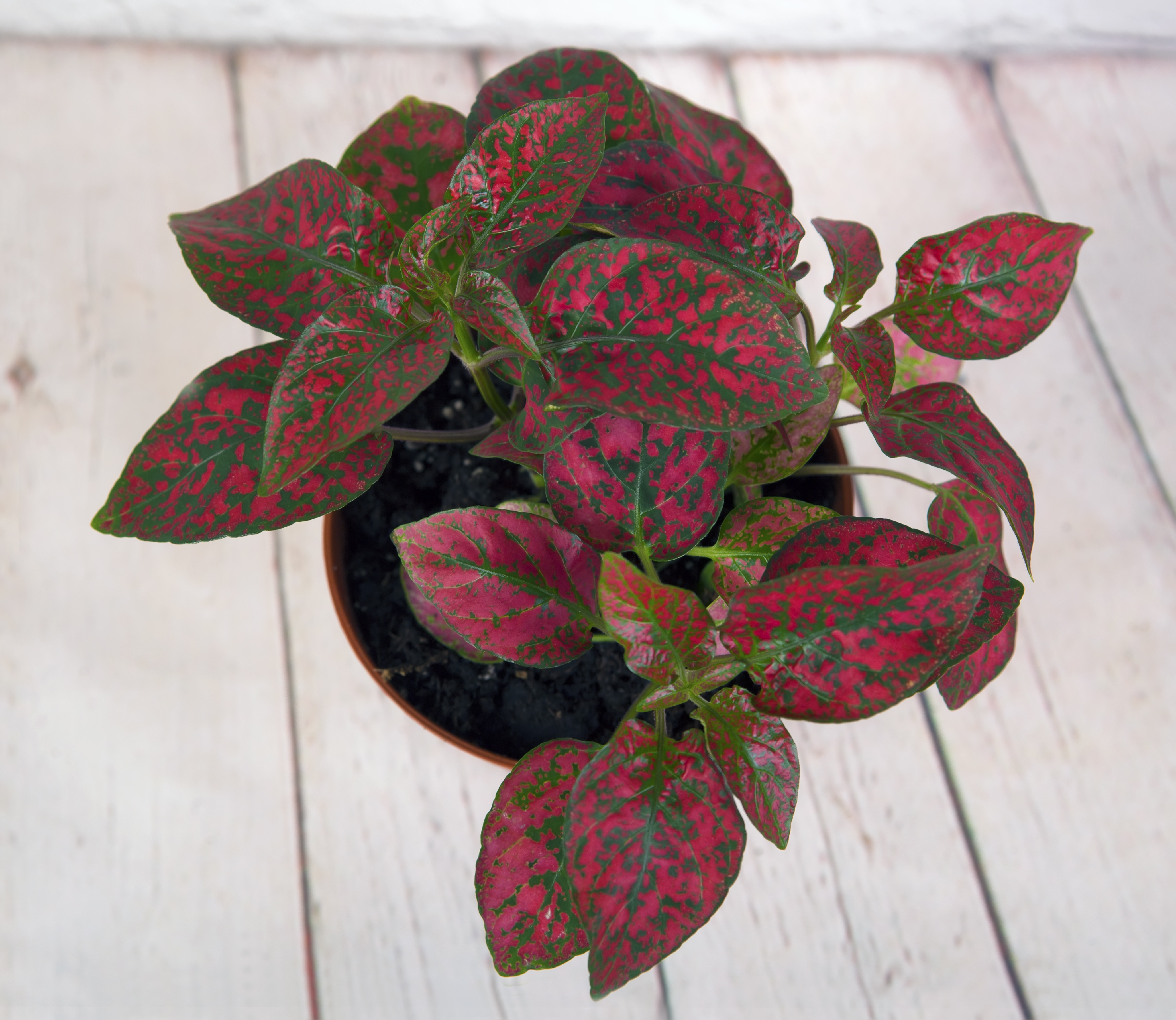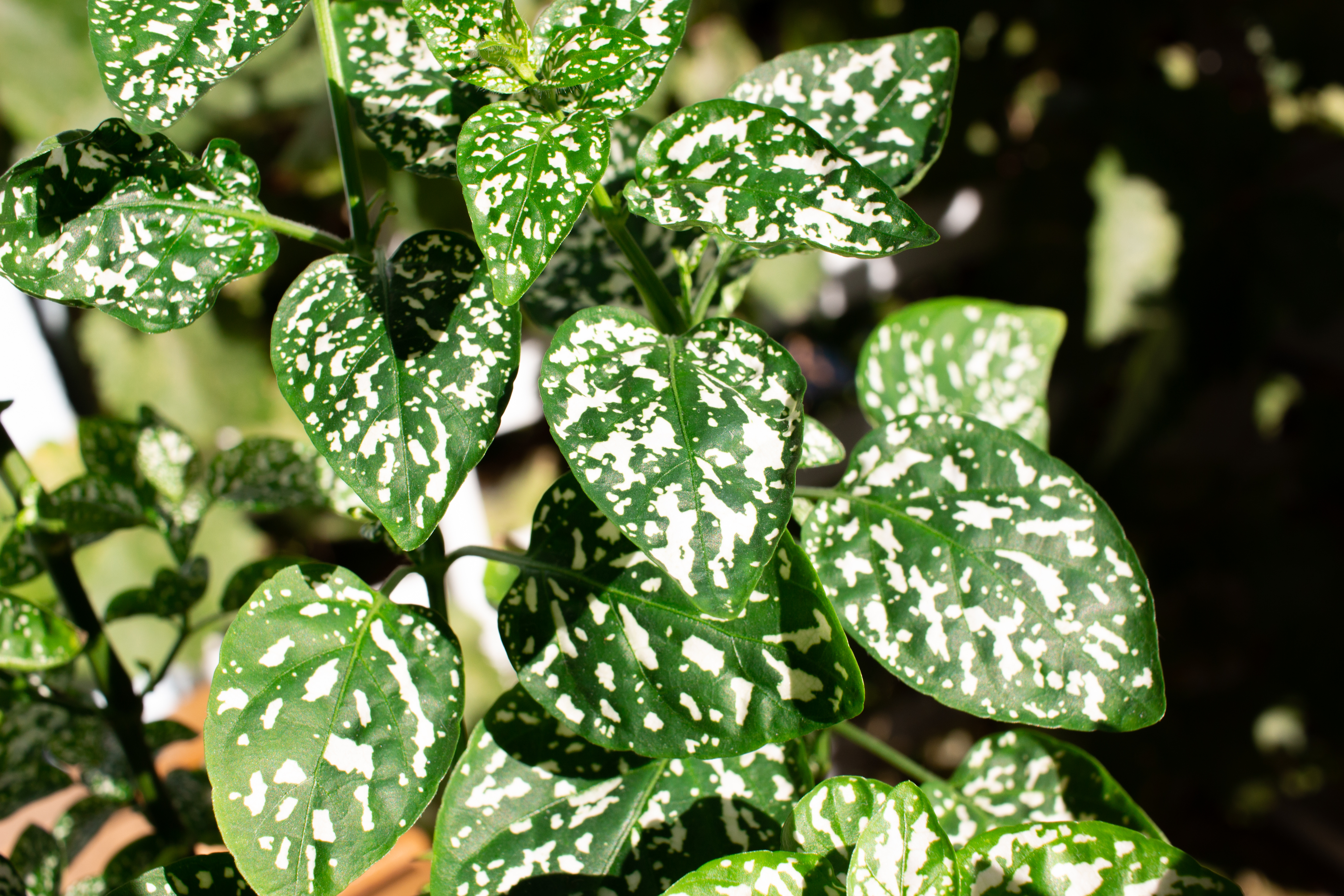Origin
Polka Dot Plants (Hypoestes phyllostachya) are brightly colored speckled plants of Madagascan origin, although they can also be found in parts of South Africa and Southeast Asia.
Its dotted appearance also gives it the common nickname of the 'Freckle Plant'.
They can come in a variety of colors, such as pink, white, red, and shades of green. Each of the unique combinations is distinctly eye-catching.

Care
In order to keep its colors vibrant, your Polka Dot Plant needs to get enough light. Part sun, part shade is ideal, as too much sunlight can be as damaging as too little.
They also like to get plenty of water. The soil should be kept moist, but not overly wet, at all times. You should check the soil in between waterings in order to make sure that your Polka Dot Plant is not drying out or becoming too wet. If it gets too much water then it may succumb to root rot, which is often fatal.
Always water with lukewarm water and never water directly onto the plant. They also hate too much and too little water - they can be very picky!

Other
Polka Dot Plants fall under the category of vining plants (any plant whose growth habit tends towards long, trailing / creeping stems) and is part of the Acanthaceae family. Other plants from this same family include, for example, the Nerve Plant. Unlike other types of vining plants, Polka Dot Plants won't cling to nearby surfaces, but they do like to trail downwards and therefore make a good choice of plant for a hanging basket.
Many different hybrids exist that show a range of leaf colorations, which is one of the reasons why this plant has so many different nicknames. For instance, the name 'Flamingo Plant' refers to its bright pink coloring. There are also spots on the underside of the leaves, however, these tend to be white in color in contrast to the otherwise vibrant coloring.
Sometimes, these plants can produce flowers (although it's quite unlikely to happen if you are keeping yours as a houseplant). These flowers are tiny and light-purplish in color. Usually, following flowering, the Polka Dot Plant will go dormant and cease to produce any more foliage, so if you see that yours has produced flowers, you may want to remove them in order to promote the continued growth of the plant.
